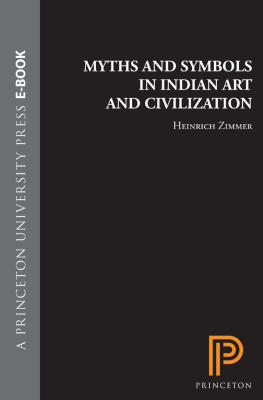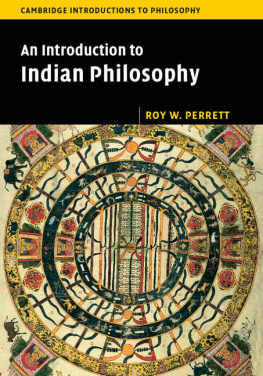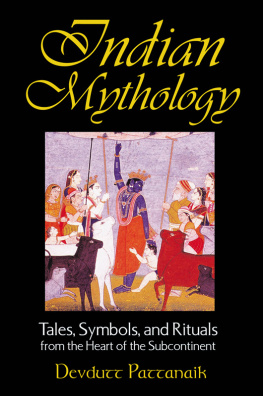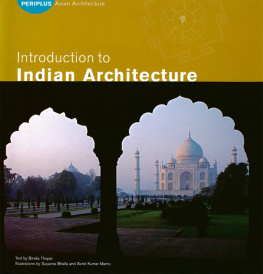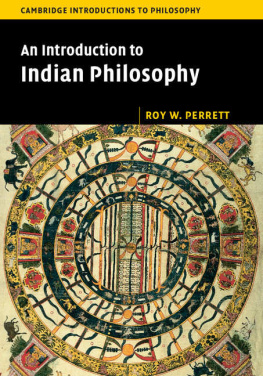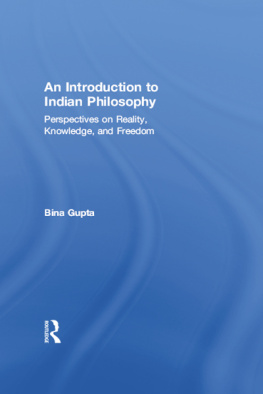
BOLLINGEN SERIES VI

HEINRICH ZIMMER
(18901943)
Works in English, completed and edited by Joseph Campbell
1946
MYTHS AND SYMBOLS IN INDIAN ART AND CIVILIZATION
(BOLLINGEN SERIES VI)
1948
THE KING AND THE CORPSE
Tales of the Souls Conquest of Evil
(BOLLINGEN SERIES XI)
1951
PHILOSOPHIES OF INDIA
(BOLLINGEN SERIES XXVI)
1955
THE ART OF INDIAN ASIA
Its Mythology and Transformations
IN TWO VOLUMES
(BOLLINGEN SERIES XXXIX)
HEINRICH ZIMMER
MYTHS AND SYMBOLS IN INDIAN ART AND CIVILIZATION
EDITED BY JOSEPH CAMPBELL

BOLLINGEN SERIES VI
PRINCETON UNIVERSITY PRESS
Copyright 1946 by Bollingen Foundation, Washington, D. C. Published by Princeton University Press, Princeton, blew Jersey
THIS VOLUME IS THE SIXTH IN A SERIES OF BOOKS SPONSORED BY BOLLINGEN FOUNDATION
First Princeton / Bollingen paperback printing, 1972
Fifth hardcover printing, 1972
Reprinted 1947, 1953, 1963
Harper Torchbooks paperback edition published 1962
Library of Congress Catalogue Card No. 467144
ISBN 0691-017786 (paperback edn.)
ISBN 069109800X (hardcover edn.)
Designed by Stefan Salter
Printed in the United States of America
All rights reserved. No part of this book may be reproduced in any form or by any electronic or mechanical means including information storage and retrieval systems without permission in writing from the publisher, except by a reviewer who may quote brief passages in a review.
EDITORS FOREWORD
It was a great loss when Heinrich Zimmer (18901943) died suddenly of pneumonia, two years after his arrival in the United States. He was at the opening of what would certainly have been the most productive period of his career. Two bins of notes and papers remained to testify to his rapidly maturing projects. The lectures that he had been delivering at Columbia University were roughly typed and arranged for conversion into books; a volume on Hindu medicine was half completed; an introduction to the study of Sanskrit had been outlined; a popular work on mythology had been begun. Scraps of paper, scribbled in German, English, Sanskrit, and French, were sifted everywhere into the pages of his library and files, suggesting articles to be written, research work, to be accomplished, even excursions to be made to specific localities in India after the close of the war. He had quickly adapted himself to the ways of his new country and was fired with an eagerness to make his contribution to its intellectual heritage. Hardly had he begun to find his stride, however, when, suddenly stricken, he passed from full career to his death within seven days.
The task of rescuing from oblivion as great a portion as possible of the abruptly interrupted labors was taken up immediately, MYTHS AND SYMBOLS IN INDIAN ART AND CIVILIZATION is a reworking of the lecture course delivered at Columbia University the winter term of 1942. The typewritten notes had been supplemented in the classroom by impromptu amplifications and illustrated by a series of over two hundredlantern slides. Their transformation into a book demanded considerable recomposition, re-arrangement, abridgments and augmentation. Recollections of conversations with Dr. Zimmer supplied most of the materials for this reconstruction. Where such help was lacking, I turned to the authorities he most respected.
Dr. Ananda K. Coomaraswamy very kindly supplied a number of supplementary notes to complete the work. His additions have been introduced in square brackets and initialed AKC; undoubtedly they would have met with the approval of Dr. Zimmer. I am indebted to Dr. Coomaraswamy, also, for the print of , and for many indispensable emendations throughout the length of the text.
Since Dr. Zimmer had no need to fill his private papers with such annotations, credits, and references as are necessary to a published volume, a complicated task confronted the editor when it came to tracking down the sources of the numerous myths and illustrations. For valuable assistance I wish to thank Dr. Marguerite Block of Columbia University, who helped select, arrange, and identify the pictures, and who read an early draft of the manuscript; Mr. and Mrs. Nasli Heeramaneck, who enabled me to discover the sources of many of the photographs; Dr. David Friedman, formerly of the University of Leyden, whose suggestions guided me to the Sanskrit originals of several of the myths; and Mrs. Peter Geiger, who performed a large portion of the actual work of research, labored on the manuscript and proofs, and took charge of a cumbersome burden of details. Swami Nikhilananda opened his library and aided with advice. Mrs. Margaret Wing reviewed the last two drafts of the manuscript, prepared the index, and assisted with the proofs. Without the generous co-operation of these friends, the work would not have been accomplished.
J.C.
New York City, October 28, 1945
.
.
.
.
.
.
.
.
.
.
.
.
.
.
.
.
.
.
.
.
.
.
.
.
.
.
.
.
.
.
.
.
.
.
.
.
.
.
.
.
.
.
.
.
.
.
.
.
.
.
.
.
.
.
.
.
.
.
.
.
.
.
.
.
.
.
.
__________
The sources for a number of Dr. Zimmers photographs could not be ascertained. The Editor regrets that these have to be presented without due credit.
MYTHS AND SYMBOLS IN INDIAN ART AND CIVILIZATION
CHAPTER ONE
ETERNITY AND TIME
I.
The Parade of Ants
INDRA slew the dragon, a giant titan that had been couching on the mountains in the limbless shape of a cloud serpent, holding the waters of heaven captive in its belly. The god flung his thunderbolt into the midst of the ungainly coils; the monster shattered like a suck of withered rushes. The waters burst free and streamed in ribbons across the land, to circulate once more through the body of the world.
This flood is the flood of life and belongs to all. It is the sap of field and forest, the blood coursing in the veins. The monster had appropriated the common benefit, massing his ambitious, selfish hulk between heaven and earth, but now was slain. The juices again were pouring. The titans were retreating to the underworlds; the gods were returning to the summit of the central mountain of the earth, there to reign from on high.
During the period of the supremacy of the dragon, the majestic mansions of the lofty city of the gods had cracked and crumbled. The first act of Indra was to rebuild them. All the divinities of the heavens were acclaiming him their savior. Greatly elated in his triumph and in the knowledge of his strength, he summoned Vishvakarman, the god of arts and crafts, and commanded him to erect such a palace as should befit the unequaled splendor of the king of the gods.
The miraculous genius, Vishvakarman, succeeded in constructing in a single year a shining residence, marvelous with palaces and gardens, lakes and towers. But as the work progressed, the demands of Indra became even more exacting and his unfolding visions vaster. He required additional terraces and pavilions, more ponds, groves, and pleasure grounds. Whenever Indra arrived to appraise the work, he developed vision beyond vision of marvels remaining to be contrived. Presently the divine craftsman, brought to despair, decided to seek succor from above. He would turn to the demiurgic creator, Brahm, the pristine embodiment of the Universal Spirit, who abides far above the troubled Olympian sphere of ambition, strife, and glory.
Next page
